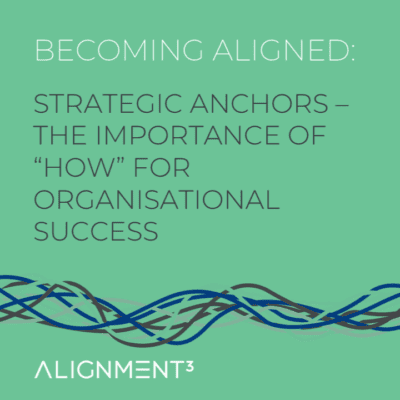
As CEO how do you get your top leaders, let alone everyone else in your organisation, aligned and, crucially, singing from the same song sheet? This is where many companies fall short. What if there was an effective way to clearly communicate to employees your vision, what really matters and importantly, why?
Highly successful organisations like Southwest, Amazon, McDonalds, Apple and even Mr Beast, use a playbook as their single source of truth to guide their employees to execute their work in the manner required. While playbooks are designed to streamline operations, establish principles and ensure consistency, in today’s fast-paced business environment a playbook can potentially cause more harm than good.
Potential Pitfalls
- Overloaded – too much information can make the playbook unwieldy and hard to use. The processing effort creates inertia and, yes, you guessed it, the playbook floats aimlessly in the cloud.
- Overlooked – if the information in the playbook becomes outdated, it’s a sure way to signal to employees that its content doesn’t matter. If not updated regularly it could also create the illusion that all bases are covered leading to a false sense of security.
- Rigidity – Strict adherence can lead to inflexibility, discourage creative problem solving, and lead to a robotic workforce. “Computer says no!” (unless this is intentional?)
- Groupthink – An over-reliance on your playbook can lead to a lack of diverse perspectives, tunnel vision, that stifle innovation and blind spots to market shifts.
- Introspection – The nature of a playbook can mean greater emphasis is placed on internal process to the detriment of the customer experience.
What is a Playbook?
A playbook is a high-level overview of what is most important to a company in its quest for success. From a financial perspective cash is king, but from an organisational effectiveness perspective context is king. The playbook provides clarity on essential organisational context and establishes expectations. It contains concise, actionable answers about critical strategic questions that can be used in decision making, communication and planning. Answers to fundamental questions about the purpose, vision, strategy, and culture of the organisation and what differentiates it from its competitors can be conveyed to everyone in the organisation through the playbook.
The primary objective of a business playbook is to establish a uniform direction and standard reference point that enables every member of the organisation to align their efforts towards shared objectives. It helps ensure that employees have a clear understanding of how to handle different situations or scenarios, promoting efficiency, consistency, and alignment with organisational goals. It becomes so much easier to align collective effort and work toward common goals when everyone is using the same reference guide. When everyone knows what matters, what’s expected of them and how their role fits into the big picture, they are also more likely to be engaged, take pride in their work, and be held accountable for their results. The responsibility for establishing organisational clarity lies with the executive leadership team.
The Dynamic Playbook
Creating an effective tool that will guide success is all about finding the right balance. Balancing structure and agility. Providing guidance and useability, while allowing for flexibility and ease of iteration. To make your playbook a valued and integral part of your modus operandi, consider these key principles:
- No Visible Cracks: ensure that the leadership team are 100% aligned around the answers to the interlinked questions. Any gaps that exist between them can quickly be exposed by employees.
- Frame its Use: avoid unintended consequences by clearly communicating how the playbook is envisioned to be used. e.g. encourage employees to voice questions and challenge current thinking.
- Explain, don’t just Expect: provide rationale behind the answers to increase buy-in, improve judgment-making and encouraging critical thinking.
- Freedom within a Framework: focus on core principles and desired outcomes, rather than rigid instruction. Empower employees to make informed choices by providing frameworks for decision-making rather than prescriptive solutions.
- Keep it Fresh: regularly review and update the playbook to reflect market changes and new learnings so that everyone can stay abreast and aligned to shifting dynamics in the industry and to adapt accordingly.
- Keep it Simple: design for easy updates without overhauling the entire document. Use clear language and avoid jargon; apply the “coffee-shop test” for clarity.
- Make it Relevant: consider different levels of detail for various roles. e.g. senior roles may be able to manage brevity, while entry-level positions might require more guidance.
- Aim for Enterprise Ownership: involve departments from across the enterprise in its design, development and update. Make it engaging for everyone. Model its use and make it easily available to all employees, e.g. have it present during meetings for review and reference.
- Integrate It: leadership must place strong emphasis on the playbook. Weave the answers into all communications and human systems. e.g. embed it into the on-boarding process to help new starters understand the context.
- Align with Values: finally, ensure the implementation, design, language, and use of the playbook reinforces the company culture and values and reflects the strategic position of your organisation.
At Alignment Cubed we start by helping you to form a shortened, single-page version that distils the key essentials of the playbook; what we term the Organisational Context Page (OCP). Once established this acts as a useful aide memoire to refer in all meetings. From this, a more detailed playbook can be created to embellish the context and provide deeper rationale to employees that is absent in the OCP. We advocate the use of the OCP as a minimum. Note: there are no right or wrong answers to the playbook questions. An answer that is directionally correct around which all executive team members can commit is better than no answer.
A significant part of building a healthy and highly aligned organisation is about providing everyone with organisational clarity. Organisational clarity lessens the room for confusion, disorder, and politics. When implemented correctly, a playbook is an essential alignment tool that guides organisational success. Not only that, but it leads to a highly engaged, innovative, and adaptable workforce. To be effective it needs to be a dynamic, living document that is kept fresh, evolves with the company and market, explains rationales, and provides a framework for decision-making rather than a strict set of rules. Research shows that what sets apart the most effective leadership teams is the time they spend aligning the enterprise on its strategy. Start by asking yourself, can you say what your strategy is? It’s not easy – but if you can’t, then is it any wonder that anyone else in your organisation can?
To understand how we can help you develop your OCP contact Jonathan or Majid.
Want to dive deeper yourself?
The following resources provide a mix of academic and practical perspectives that can help you deepen your understanding of the concepts discussed in the article.
- No One Knows Your Strategy – Not Even Your Top Leaders, by Donald Sull, Charles Sull, and James Yoder, MITSloan Management Review.
- Can You Say What Your Strategy Is? by David J. Collis and Michael G. Rukstad, HBR, April 2008
- The Advantage by Patrick Lencioni
- How the Most Successful Teams Bridge the Strategy-Execution Gap by Nathan Wiita and Orla Leonard, HBR, Nov 2017
- Structure That’s Not Stifling, by Ranjay Gulati, HBR May 2018. How to give your people essential direction—without shutting them down.
- Give Your Employees Freedom Within a Framework by Michael E. Kossler.
- How Netflix Built Its Company Culture – Learning from Netflix: How to Build a Culture of Freedom and Responsibility (Podcast)



